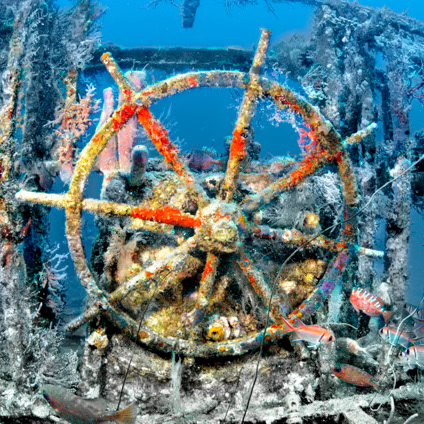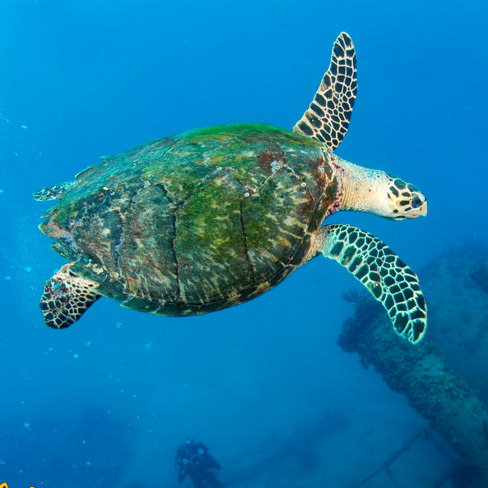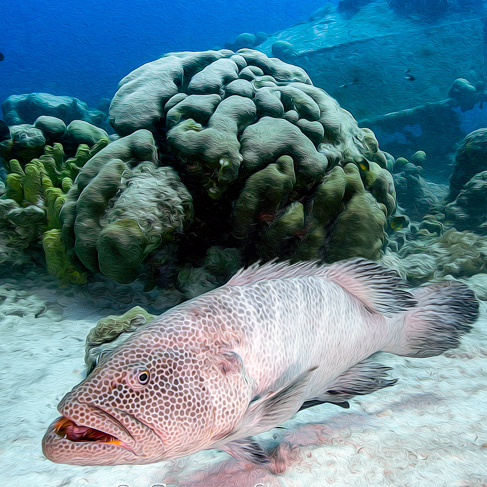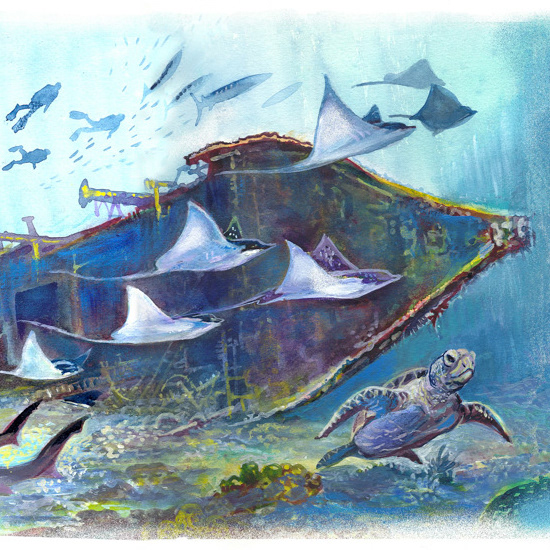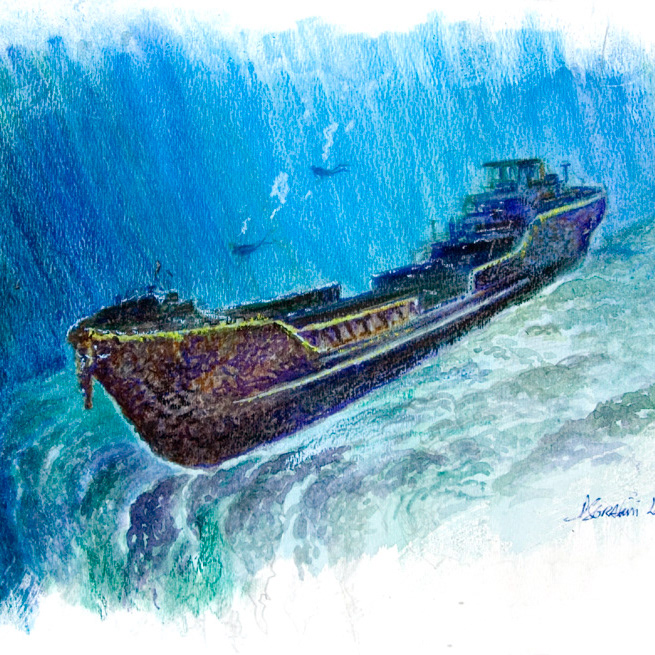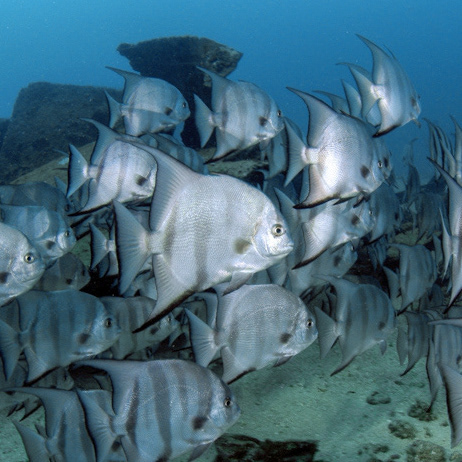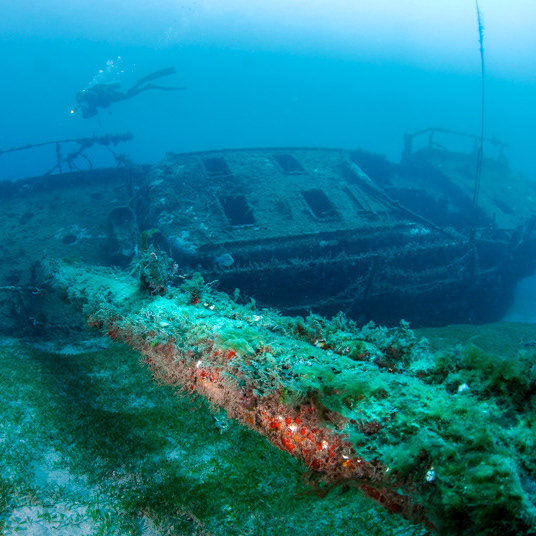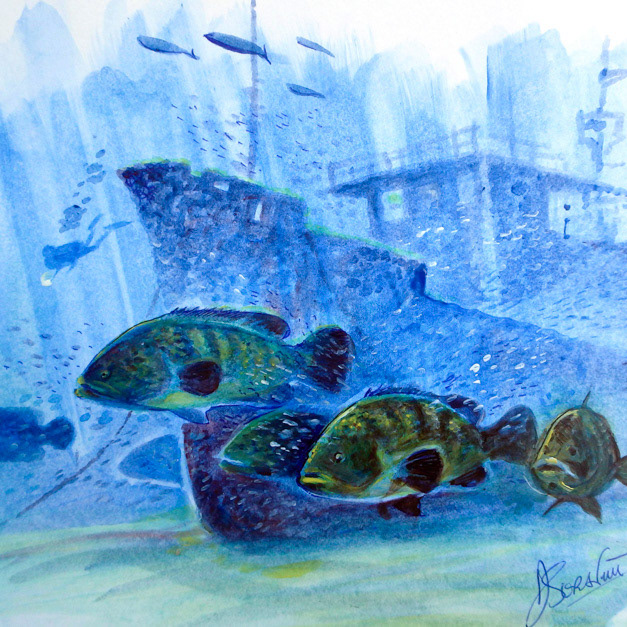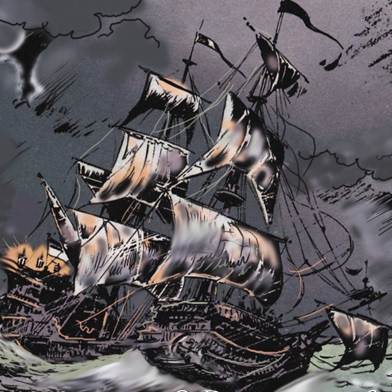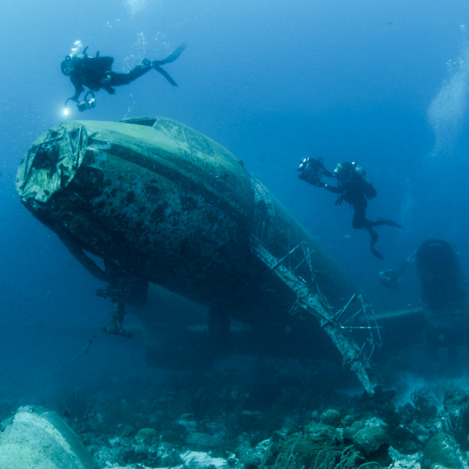The Hilma Hooker shipwreck, Bonaire by Cathy Salisbury
One of the major conspirators in this adventure was Captain Don Stewart, an American navigator and scuba diver who sailed into Bonaire in 1961 in search of water and other provisions. Captain Don, a dead-ringer for Errol Flynn, arrived on the Valerie Queen, his two-mast schooner, built in 1912 and sunk in 1963—much to the enjoyment of his Bonairian dive club. For a man of the sea like Captain Don, it would have been unimaginable in 1961 that forty years later, he would still be living in Bonaire.
Back then, Bonaire was a sleepy and forgotten island, with little chance of economic development. Bonaire was the poor sister of the ABC family, and Bonaire natives had little choice but to leave their home in search of employment opportunities. Bonairians were in great demand by the oil refineries of Curaçao and Aruba, as they were well known as good navigators.
Back on the arid island of Bonaire, mostly inhabited by cacti, the rhythm of life was calm and the industrial world, far away. Maybe that’s what Captain Don liked so much about it.
Captain Don was quick to identify a fabulous treasure that Bonaire had under its nose. It wasn’t gold trinkets or trunks full of jewels and ancient artifacts. It was a living treasure—and hidden but a few feet from the shore. Well-protected on the leeward side of the island in crystal-clear water was a magnificent coral reef.
In this hidden corner of the Caribbean, Captain Don set about building bungalows and diving facilities, in hopes of sharing this wonderful treasure with the outside world. He had an original formula: unlimited shore diving, either right in front of the dive center or, thanks to an old truck, at various spots down the coast. Before he knew it, Captain Don had a tourism success story on his hands and dive resorts started popping up all over the island. Dive tourism became a staple of Bonaire’s economy.
Bonaire’s marvelous reefs were well appreciated by the numerous divers flocking to the island. But there was still one thing missing: a nice wreck, not too far away from the shore and not too deep.
There were already plenty of shipwrecks along the coastline of Bonaire. The Valerie Queen, Captain Don’s sailboat, lay on the reef in front of his hotel, but the wooden structure had not withstood the voracious worms that ate away at the hull. There was also the Windjammer, the superb three-mast clipper—however it was sunk in water far too deep for most recreational divers. Thus begins the story of the Hilma Hooker.
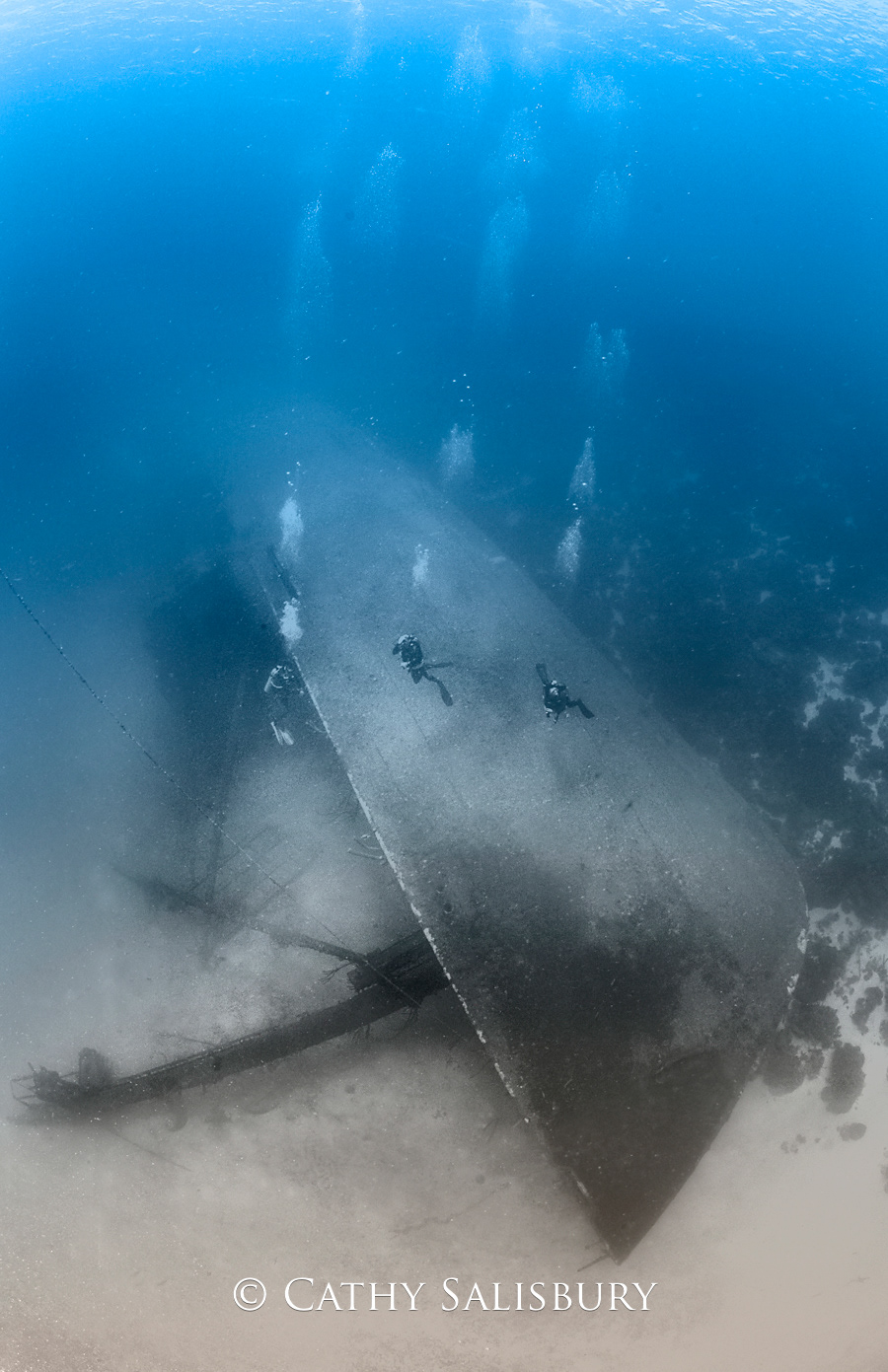
The Hilma Hooker, Bonaire by Cathy Salisbury
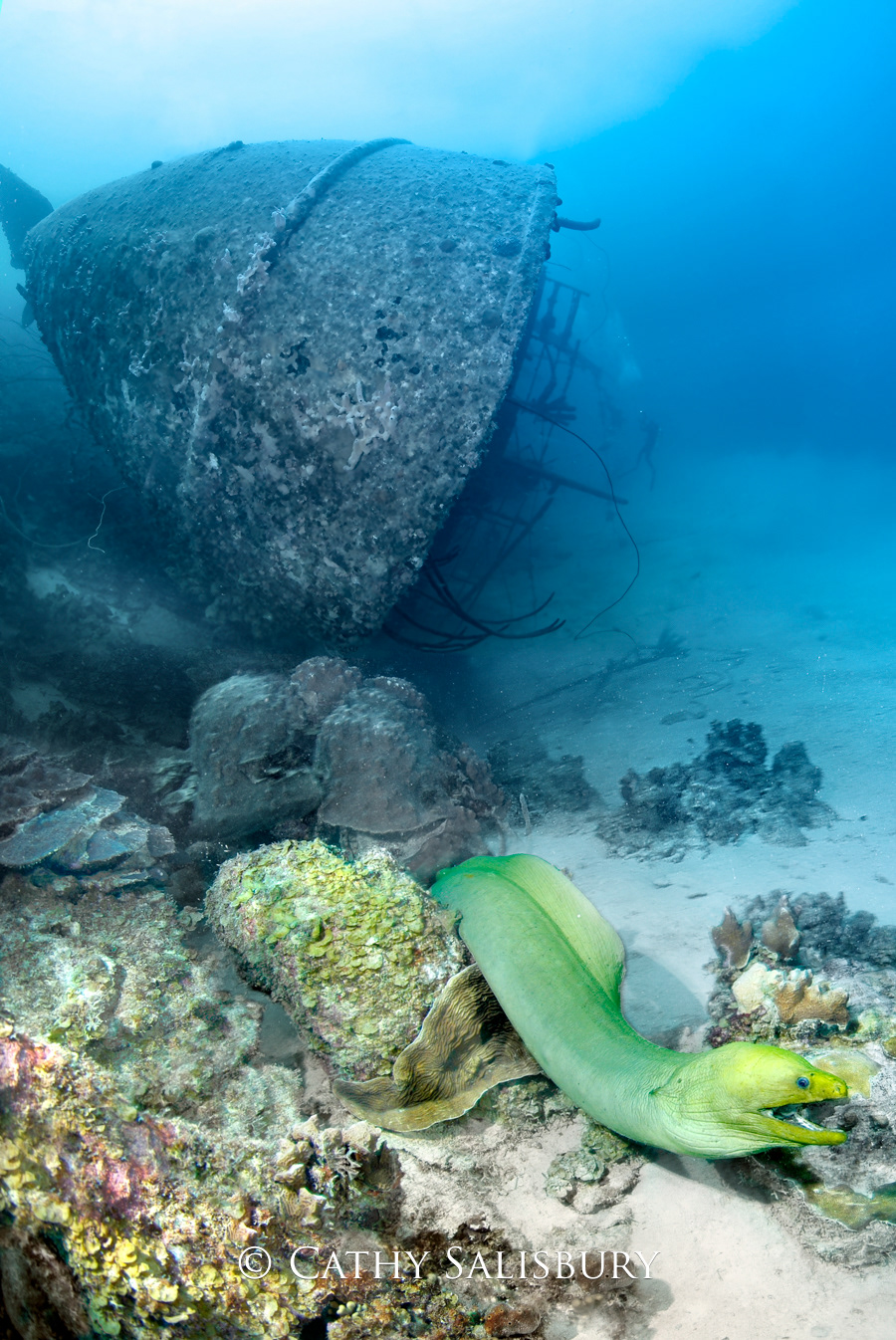
The Hilma Hooker, Bonaire by Cathy Salisbury
The Hilma Hooker, Bonaire by Dominique Serafini
In April 1984, suffering from mechanical problems and enroute for some unknown destination, a Colombian cargo ship by the name of the Hilma Hooker sought refuge on the island of Bonaire. The vessel threw its anchor at a distance from the shore, close to Klein Bonaire—the little islet on the leeward side of Bonaire.
Customs officials watched the freighter from the shoreline of Bonaire. Why was the Hilma Hooker hiding behind Klein Bonaire, avoiding docking in the Kralendijk harbor? What was the reason for such irregular and suspicious behavior? So out to Klein Bonaire the officers went, demanding permission to board the vessel and inspect its cargo.
Without any real option, the captain reluctantly let the authorities aboard. But no sooner had the officers planted their feet on the deck, than the captain pulled up his anchor, letting the ship drift out towards international waters. The customs officials retaliated by towing the Hilma Hooker into the port of Kralendijk, stopping the freighter from making its grand escape. The captain protested furiously, but his complaints fell on deaf ears.
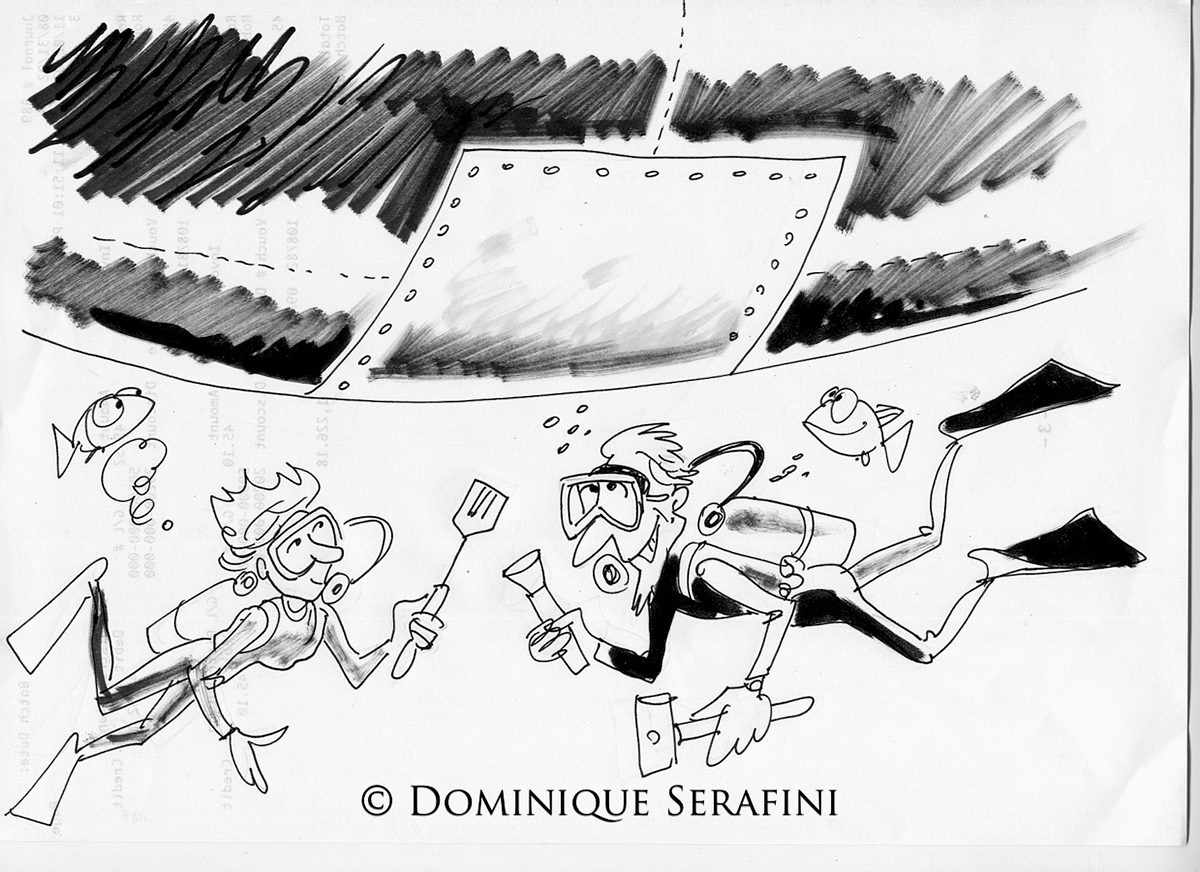
The Hilma Hooker, Bonaire by Dominique Serafini
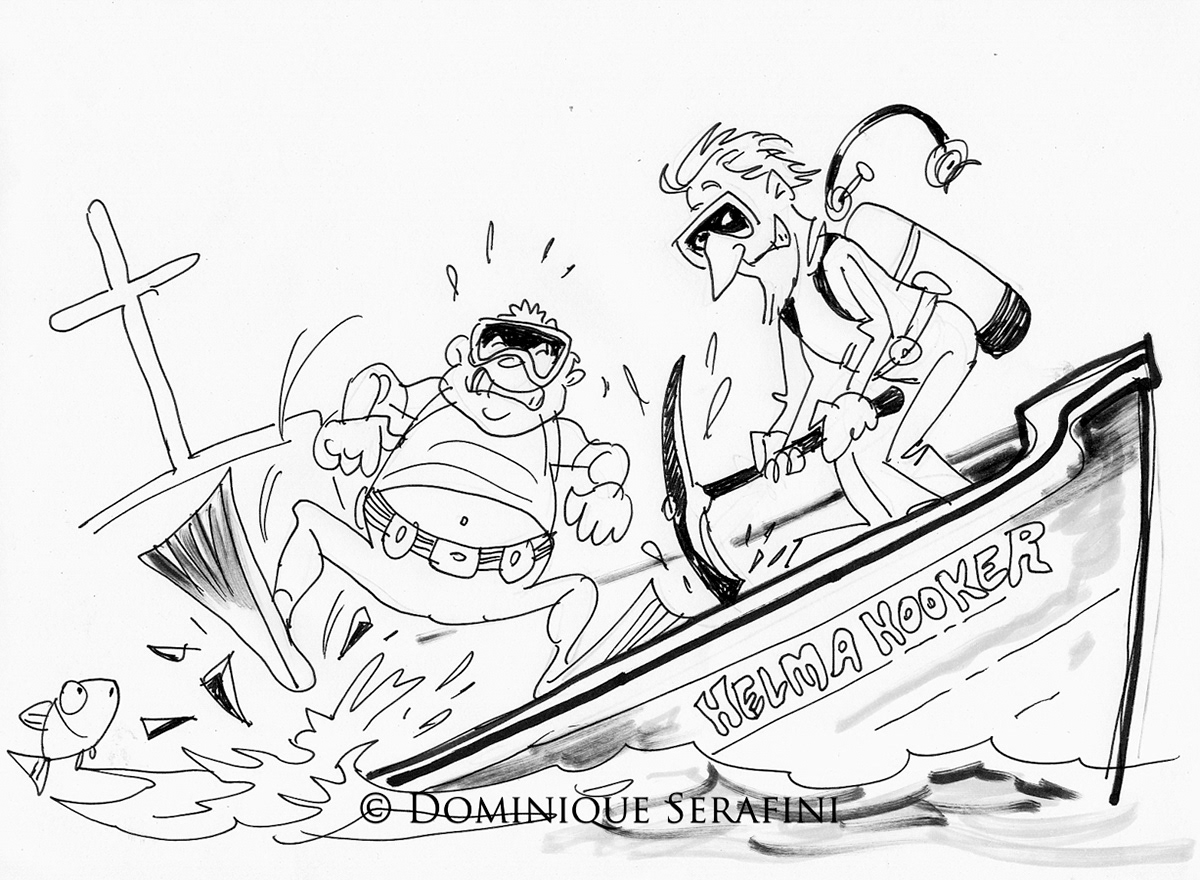
The Hilma Hooker, Bonaire by Dominique Serafini
Once docked in the port, customs officials started their rigorous inspection of the ship. In fact, they shipped a team of investigative specialists in from Miami for the purpose. But despite all the expert advice, the officials finished their search humiliated and empty-handed. Convinced that something was wrong, they asked Captain Don for his help. Using scuba gear, Don and his friend Janet scoured the bottom of the bottom of the ship and quickly found a suspicious metal plate welded to the hull. The captain had no doubt made a sort of secret compartment, perhaps to hide some mystery stash.
As the search narrowed, the captain tried one last maneuver to sabotage the investigation. Discretely, he opened the Hooker’s floodgates so as to scuttle the ship, but unfortunately a bit too late. Behind the hidden bulkhead, the inspectors found the pot of gold—a nice package of marijuana and cocaine. Twelve tons to be exact.
With the captain in jail and the ship seized, officers tried to find the boat’s owner, but to no avail—the Hooker was left unclaimed, abandoned in the port. The ship posed a great problem to the port authorities. What were they to do with this old freighter taking on water and needing to be pumped continuously? The Hooker was a ship that clearly risked sinking and could potentially block other commercial vessels from docking at the port. The weeks passed. Not knowing what to do with this rusty old vessel, the file passed from one administrator’s desk to another.
But the diving establishment of Bonaire had a very clear idea of what to do with the Hilma Hooker—and hatched a scheme to get their way. As a service to the port authorities, members of the dive community proposed to tow the Hilma Hooker out of the Kralendijk harbor and out of the hair of the port authorities. They suggested towing the vessel to the south end of the island, where it would be of less risk if it happened to sink.
After much debate, the port authorities accepted the proposal and the old tired freighter was towed out to what would be its final resting-place. Anchored in the fine white sand near Pink Beach, the Hilma Hooker stoically awaited her destiny.
On September 12, 1984, with the help by a few finned conspirators, the cargo ship mysteriously sunk. Anchors attached, the hull sits at 100 feet on a bed of sand between two coral reefs. Who could dream of a better spot for a superb underwater attraction?

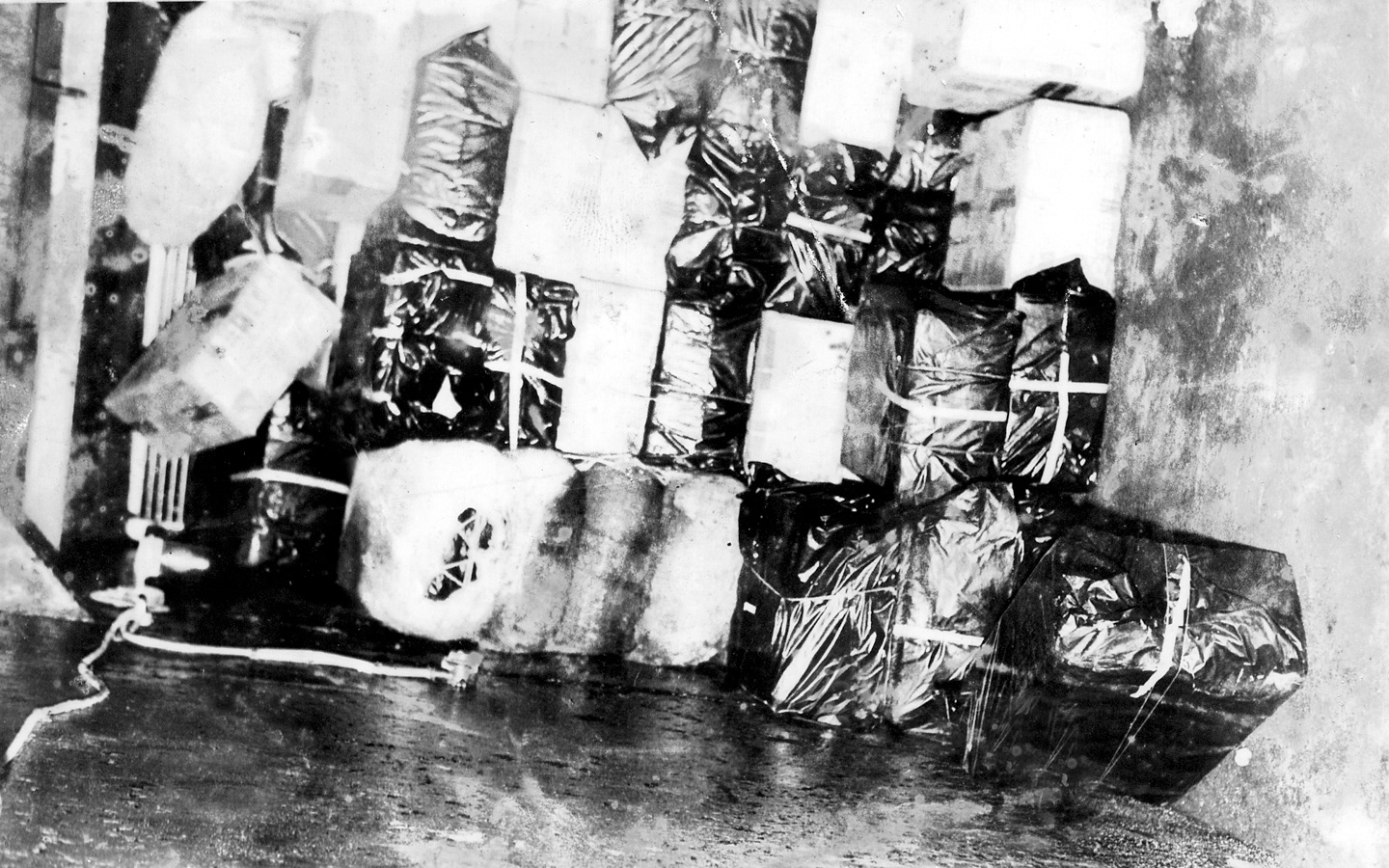
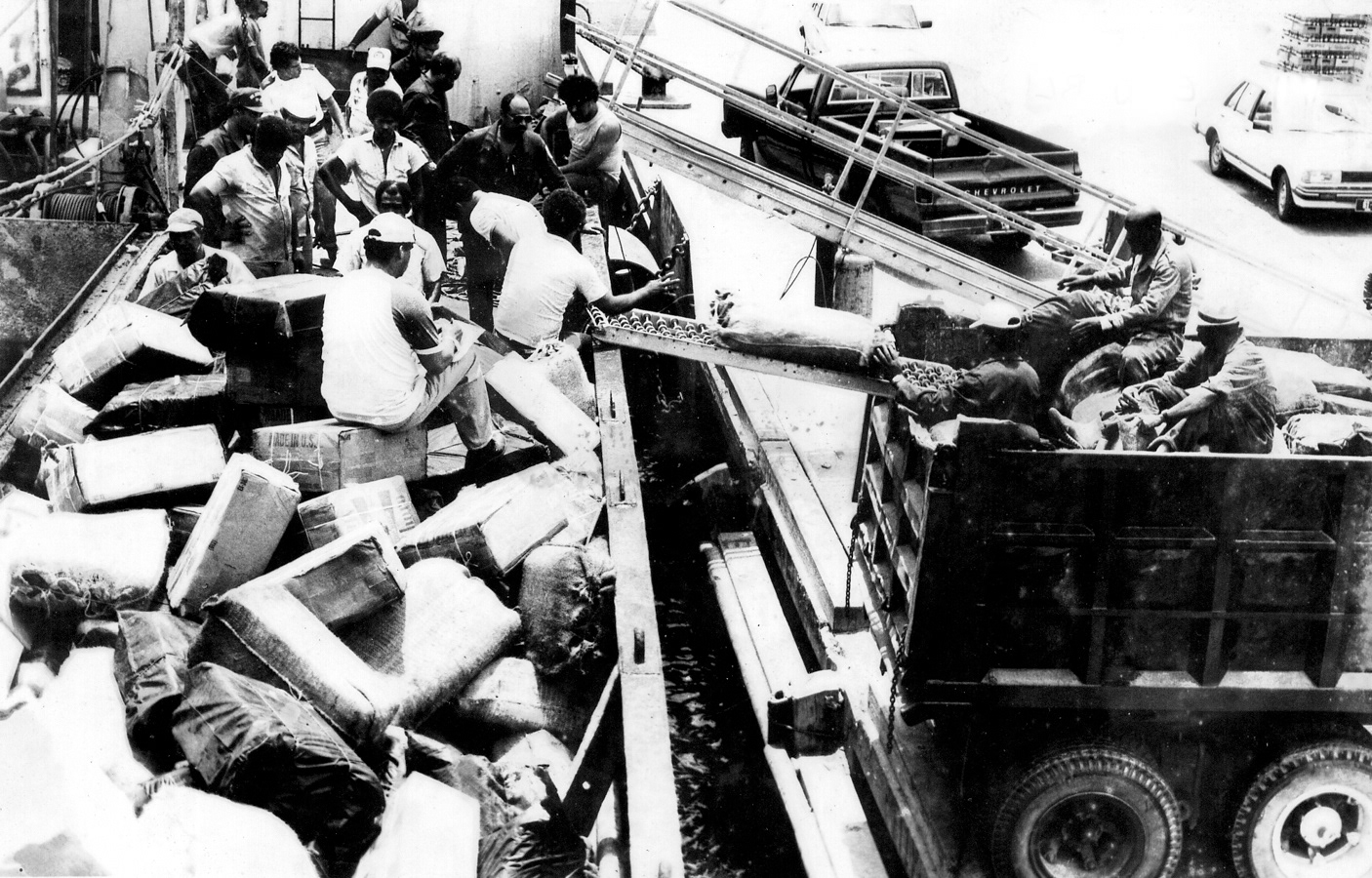

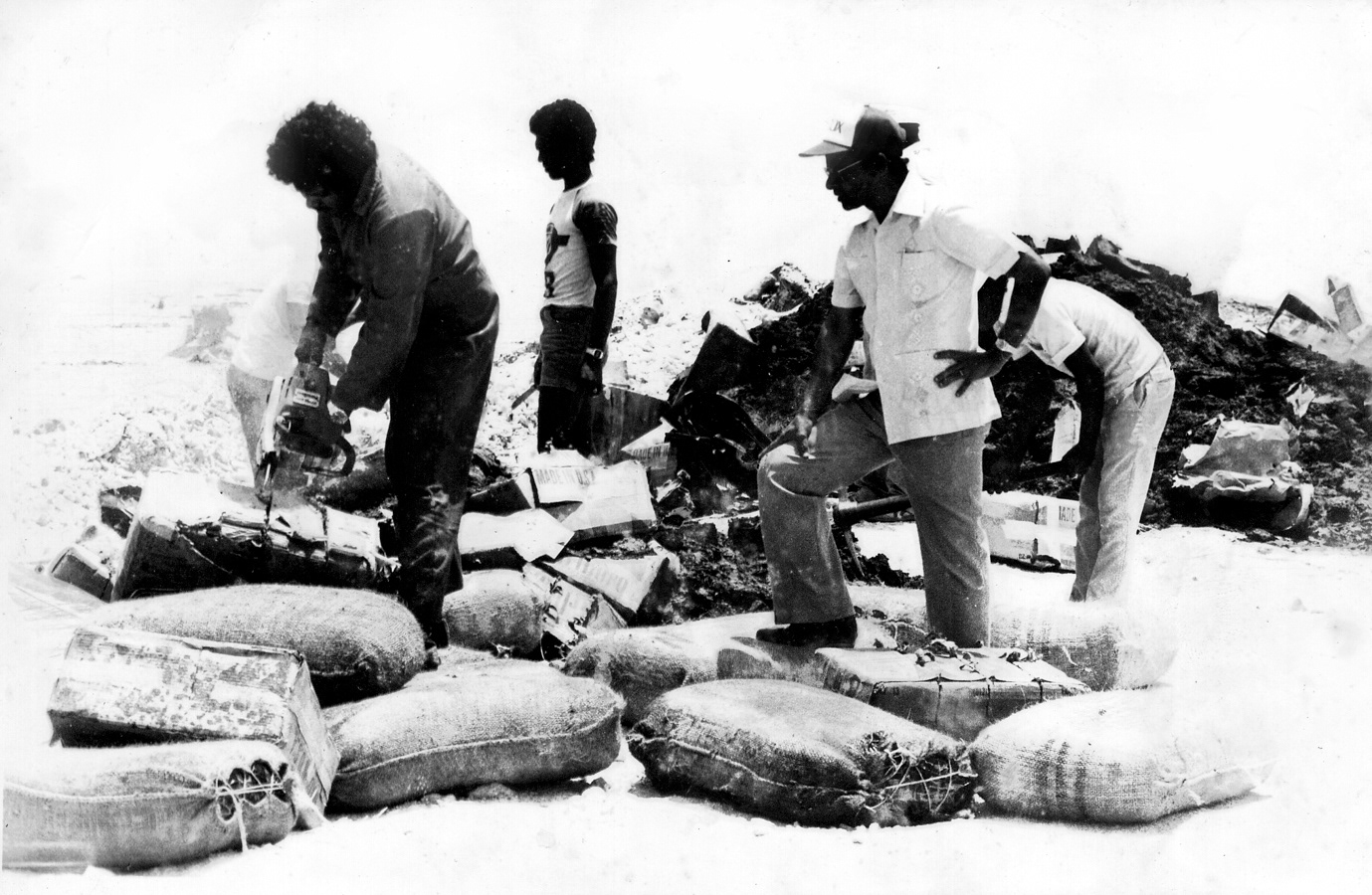

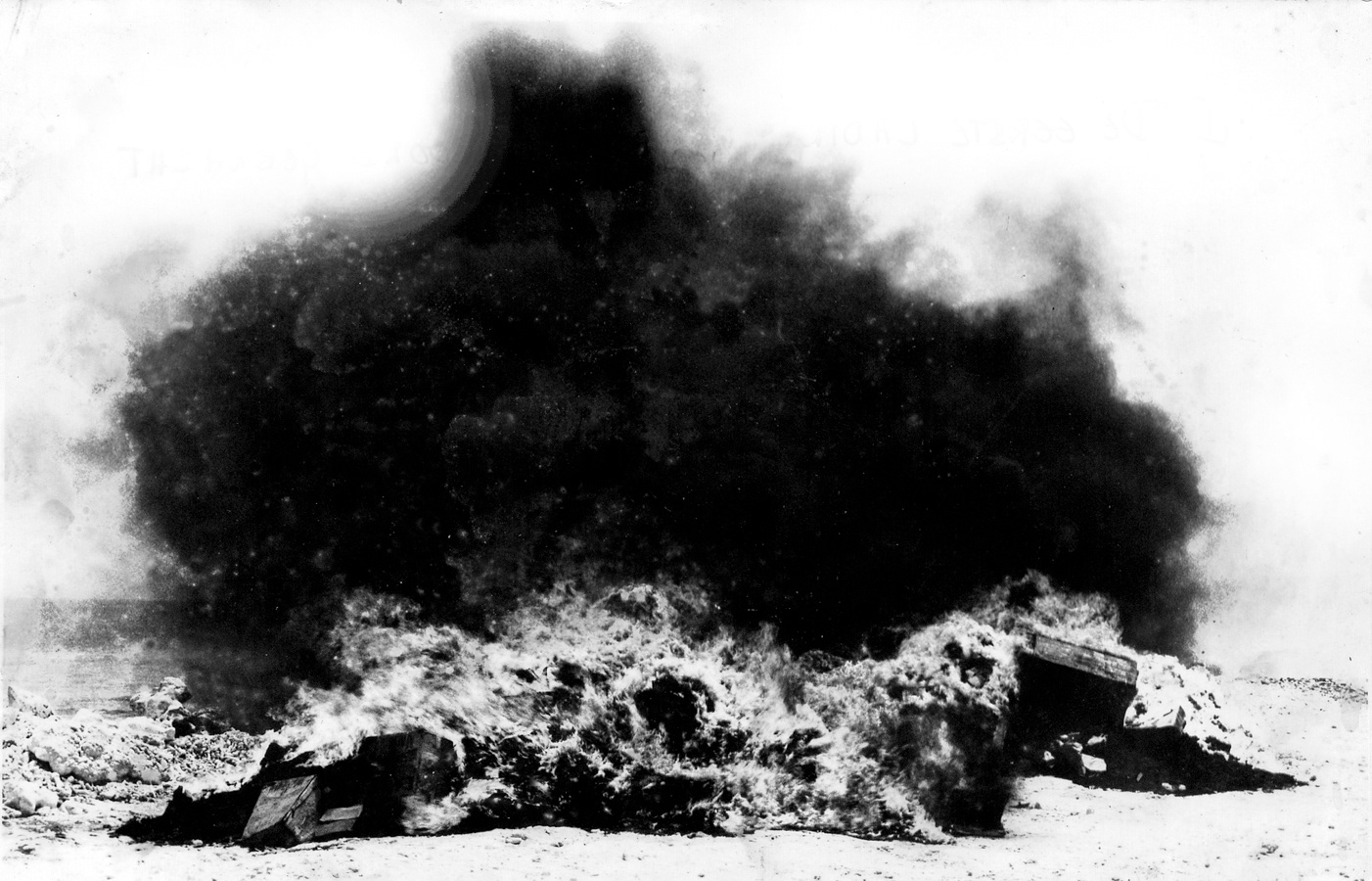
It’s pointless to dive the Hilma Hooker from a boat. As the wreck is easily accessible from the shore, just rent a pick-up and head down the coast. Look for a yellow rock on the shore with “Hilma Hooker” written on it and park. Fins in hand and a tank on your back, you can easily walk right into the water.
The Hilma Hooker is by far the most popular dive site in Bonaire and thousands come every year to dive it. By 10am, the action begins. The shoreline late in the morning looks more like a parking lot than a secluded island paradise. Underwater, the hull of the ship bubbles and dozens of silvery garlands of air stream up to the surface. Small groups of divers cross every which way in the slipway.
Show up early in the morning, before the crowds arrive, and you can peacefully enjoy the splendor of the fish that inhabit this underwater condominium. You’ll see parrotfish, groupers, snappers and wrasses. But most exceptionally, you’ll see the glittery tarpons that patrol the sides of the freighter and then disappear into the shadows.

